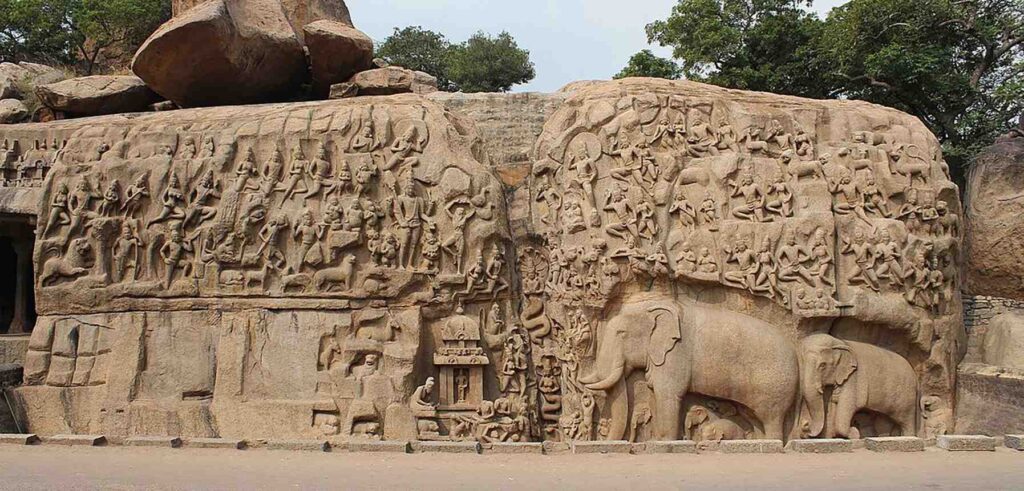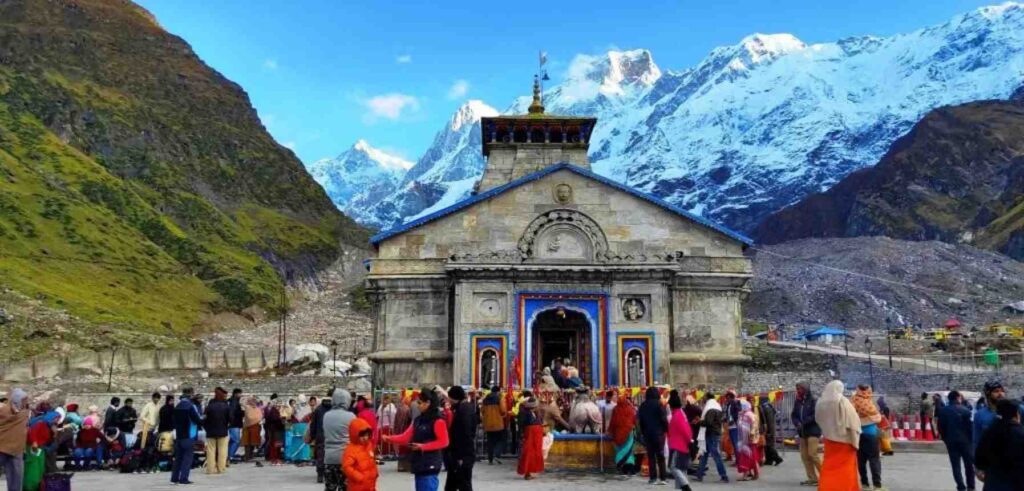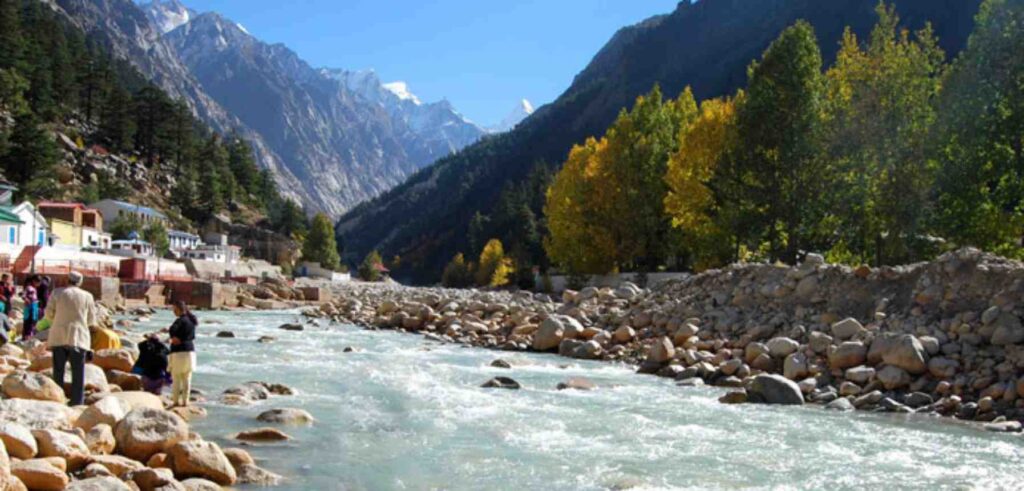Gangotri Temple, Uttarkashi: The Origin Of Sacred Ganges

Have you ever stood in a place so sacred that it felt like time stood still? Gangotri Temple is one such place in Gangotri Dham. It is not just any regular destination but an experience for spiritual seekers.
What makes it even more interesting and special is that this is where the Ganges origination starts. At its source, the river is known as the Bhagirathi, and it becomes the Ganga (Ganges) after it merges with the Alakananda River at Devprayag.
The Gangotri temple is a fascinating blend of mythology, natural beauty, and architectural simplicity. It is a timeless haven where divinity meets the earth, with the majestic Himalayas as its guardian and the river flowing like a heavenly hymn. Let’s explore the Gangotri Dham, one of the important Char Dham pilgrimages in the Hindu religion.
Gangotri Dham: The Mythology, Legacy and the Religion

The Gangotri Char Dham among temples of India is of great significance in Hindu culture, mythology, and ritualistic customs. Let’s explore Gangotri Dham in more depth.
The Mythical Descent of Ganga

Bhagirath was a magnificent king who lived in a time when monarchs and sages ruled the world. His heart was griefed because Sage Kapil cursed his ancestors, making their souls restless. King Bhagirath set out on a difficult quest of self-punishment to call the divine river Ganga to Earth to calm their spirits. The sky finally reacted after years of dedicated commitment.
Inspired by Bhagirath’s resolve, Lord Shiva permitted Ganga to descend. But the Earth was in danger from her strong waterfalls. Shiva ensnared her in his matted hair to calm her rage and gently let her go in a graceful and beautiful fall. As a result, Ganga descended from the sky and debuted on Earth at Gangotri.
The Legacy of the Temple

For countless followers, the location where the Ganga first touched the Earth became a sacred destination as the decades passed. After realising its importance, Nepalese General Amar Singh Thapa built a temple in praise of the goddess at the beginning of the 18th century. Avalanches endangered the temple’s survival, yet it strived over time. Later, the Jaipur royal family decided to rebuild this hallowed location, guaranteeing that the devotional atmosphere would endure.
The Gangotri Temple’s architecture is a stunning example of North Indian design with Katyuri elements. Numerous souls sought solace within its walls, as shown by its elaborate designs and wooden shelters for weary pilgrims.
Char Dham Yatra

Today’s visitors view Gangotri Dham as a spiritual haven rather than a geographical site. Pilgrims from all walks of life come here as part of the famed Char Dham Yatra alongside Yamunotri, Kedarnath, and Badrinath, believing that soaking in the sacred waters of Ganga can purify their sins and offer them Moksha (freedom from the cycle of life and death). King Bhagirath pondered atop the Bhagirathi Shila, a rock in Gangotri, in preparation for the Ganga’s fall. Devotees here carry Pind Daan rites for their ancestors to obtain blessings and inner tranquillity.
Pandav Gufa and the Holy Flame

The Pandavas are said to have rested in the nearby old cave, Pandav Gufa while crossing these holy mountains. An endless flame known as Akhand Jyoti glows inside the temple even during the six months when winter covers Gangotri in snow and shuts it down. For individuals looking for a spiritual connection, this flame acts as a beacon and represents the presence of God.
Gangotri Temple Timings and Rituals

The schedule of the Gangotri darshan is planned in a way that allows the flow of devotees while preserving the sacredness of the rituals and rites. Visitors can enter the temple from 6:45 AM to 7:00 PM in the winter and open from 6:15 AM to 8:00 PM in the summer. Among the daily routines are:
- Mangala Aarti: The daily worship takes place during the early morning hours to awaken the deity and ask for divine blessings.
- Bhog: Bhog is presented as a sacred meal to the goddess in the afternoon.
- Sandhya Aarti: People perform this tradition at night to worship and demonstrate gratitude for the day.
The Sacred Gangotri Dham Temple Complex

The Gangotri Dham Temple complex is more than just the main temple. A Gangotri temple trek takes you to multiple smaller temples and sacred shrines with profound religious importance. Various sacred spots exist inside the complex known as Gangotri Dham Temple.
- Bhagirath Shila: The rock memorialises the meditation where King Bhagiratha brought the Ganges River to Earth.
- Gauri Kund: The site where Parvati meditated to gain the love of her future mate, Lord Shiva.
- Surya Kund: A natural hot water spring near the temple believed to have healing properties.
How to Reach Gangotri Temple

Getting to the Gangotri Char Dham while travelling to Uttrakhand is accessible by various modes. Pilgrims get to this sacred site via various routes.
- By Air: Jolly Grant Airport in Dehradun, which is 250 km away, provides access to Gangotri. Upon arriving at the airport, tourists can go to Gangotri via bus or cab.
- By Train: About 234 kilometres separate Gangotri and Rishikesh, the closest train station. Regular train service is available from Rishikesh to significant cities. First, visit Rishikesh to decide between taxi rentals and bus services that go to Gangotri.
- By Road: Gangotri is accessible from major Uttarakhand cities via its well-established road system. Private taxi services and public buses exist between Rishikesh, Haridwar, and Dehradun. The breathtaking Himalayan mountain scenery benefits pilgrims and visitors, making their trip more enjoyable.
Best Time to Visit Gangotri Temple

The summer months of May to June and the early autumn months of September to October are the ideal times of year to visit the Gangotri Temple. Visitors can still approach the shrine during these months and enjoy excellent weather conditions. The idol of Goddess Ganga is taken to Mukhimath, a village close to Uttarkashi, for ongoing worship during the winter when the temple closes due to considerable snowfall.
Rules and Guidelines
Visitors are expected to follow specific rules and guidelines to maintain the sanctity of the Gangotri Temple. These include:
- Dress Code: Modest clothing is required. Wear appropriate clothing such as lengthy garments and covered upper arms instead of short pants and sleeveless tops or exposing clothing.
- Food Restrictions: The grounds of this temple forbid both the consumption of meat food and alcoholic drinks.
- Photography: Worshippers are not allowed to capture photographs within the temple premises. Visitors must honour the religious practices and traditional customs inside the temple.
Experience Gangotri Temple Divinity with TripzyGo
The Gangotri Char Dham in Uttarakhand is more than just a religious location; it is a haven where devotees can experience the Himalayas’ divine essence. Through spiritual connection, the Gangotri Temple’s historic peaks and sacred Bhagirathi rivers provide visitors with peace and bliss that lasts long after their journey. Since Gangotri Temple offers a spiritual journey into the holy core of devotion, visiting it entails more than just a typical trip experience. Make your travel arrangements with TripzyGo, and allow us to enhance your trip to the spiritual land of Gangotri Dham.

